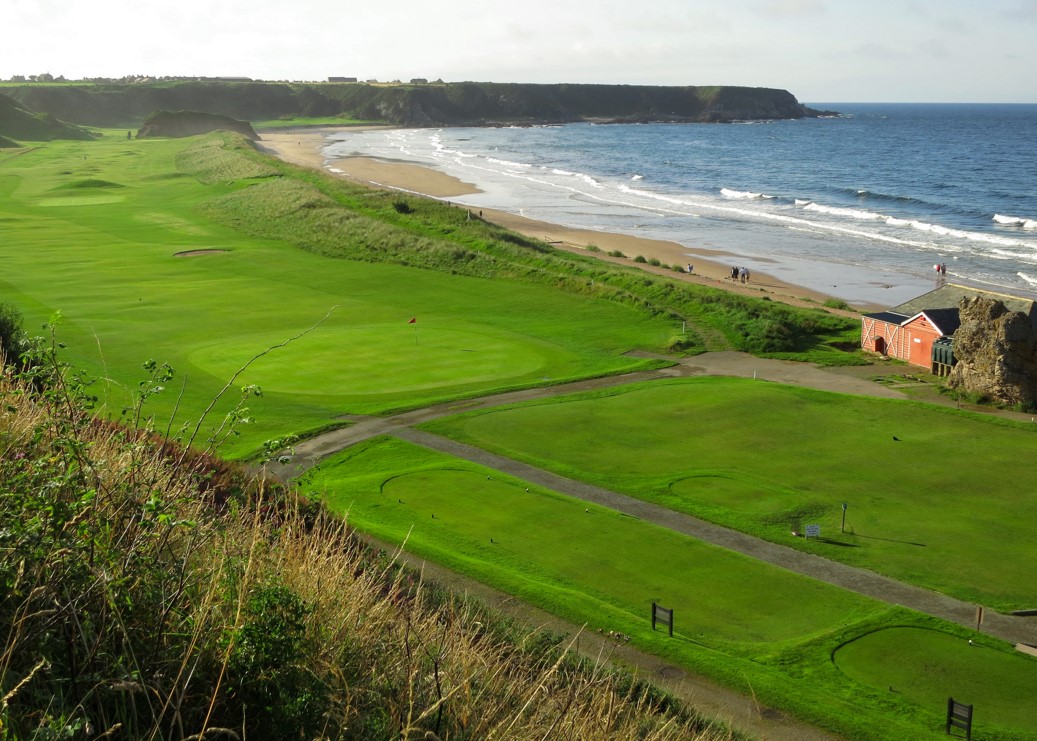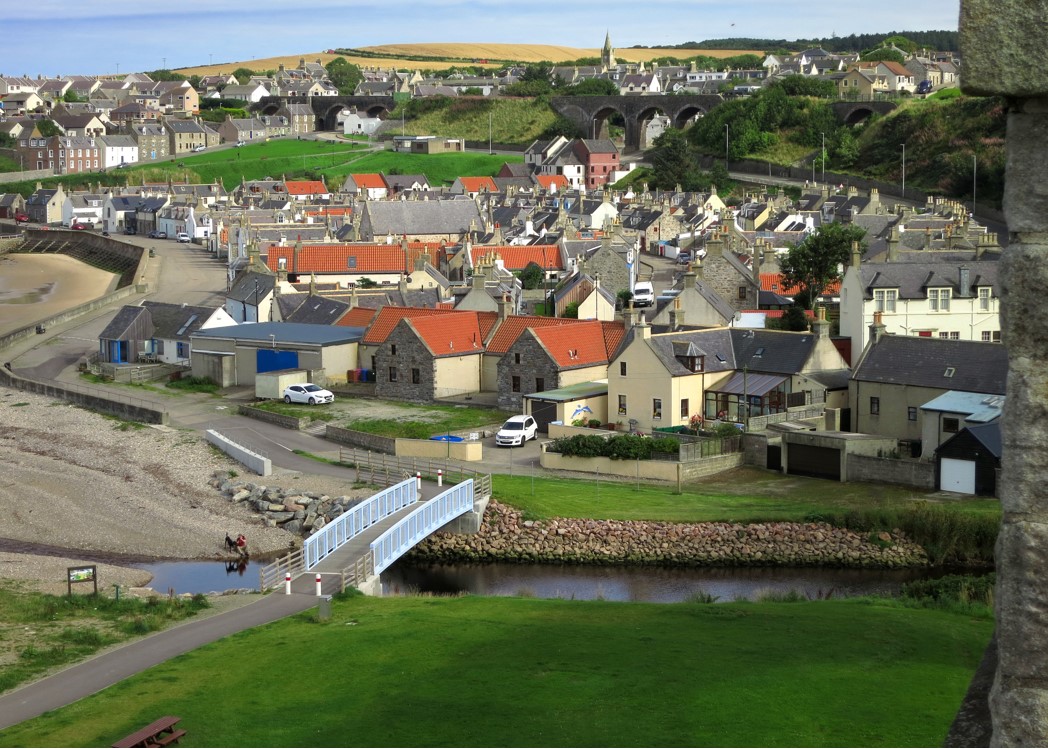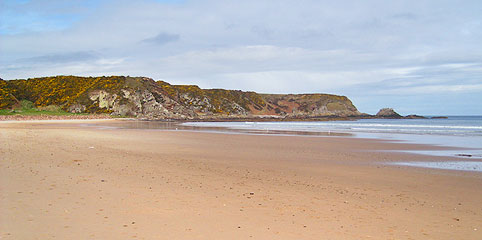|
The Seatown, Cullen |
|
|
The Seatown of Cullen is a splendidly irregular
clutter of colourful painted houses many of the gables to the sea,
standing in a marked contrast to the regular layout and wide
streets of the planned "new town" developed from 1822 onwards. The Seatown is a carefully maintained conservation area and offers pleasant walks with dramatic views. It is renowned for the beauty of it’s setting and is often called "The Queen of the Banffshire Coast" The fishing industry at Cullen dates back to at least 1641, but the present harbour was begun in 1817. Better harbour facilities at Buckie led to the eventual decline of Cullen as a fishing port. Cullen specialised in the export of smoked haddock and had three curing houses. It is now a thriving holiday resort, famous for "Cullen Skink" - a fish soup based on haddock. A wealth of marine life thrives in the open sea while thousands of birds and other creatures throng the spectacular cliffs. On a calm sunny day bottlenose dolphins can be seen in the Moray Firth leaping and playing - often quite close to the shore. They are seen most days in the Cullen Bay in fairly large groups. They are a protected species and sensitive to disturbance, so enjoy these beautiful creatures but respect them as well. There is a Wildlife Centre at the mouth of the
famous River Spey where there is an exhibition about the Moray
Dolphins. The centre also hosts a research unit housing an
independent research team who are studying the bottlenose dolphins
along the Moray Firth. Dolphin watching from boats is exciting -
take a trip with accredited boat operators. Perhaps the most striking feature of the town is the series of railway viaducts, one of the great achievements of nineteenth century railway engineering, which divide the Seatown from the upper town. They were built in 1886 by the Great North of Scotland Railway because the Countess of Seafield would not allow the line to cross the policies of Cullen House. The arches of the viaducts frame some of the best views of the town and surroundings; the Seatown, the Cullen Burn, the 19th century Temple of Pomona - a garden tea-house in the shape of a classical temple and, most magnificent of all, Cullen Bay with the isolated rock stacks known as the ‘Three Kings’. Part of the railway line, which was closed in 1967, is now incorporated in a coastal footpath and is a section of Sustrans National Cycle Path . Cullen's long-standing popularity with
holidaymakers is based on its fine long sandy beach, which is one
of only seven beaches in Scotland never to have failed the
European Community test of bathing waters. Twenty samples each are taken from 60 designated bathing waters. Beaches which get the all clear on all of them are given guideline standards, and indicate excellent water quality. Cullen was one of only 4 beaches in 2000 which passed this stringent test with flying colours, exceeding the E.U's requirements. S.E.PA's Scottish Bathing Waters 2000 report noted that "Cullen was one of the best beaches in the country." The holiday house that I offer for rent is situated in the Seatown of Cullen. The house is VERY close to a lovely stretch of sandy beach and the old sheltered harbour. The harbour is now mainly used for swimming, sunbathing and by children who love to build sand castles or fish from the pier. Sea-angling and trips around Cullen Bay can be arranged all summer - weather permitting. Dolphin watching trips leave from Buckie Harbour several times a day in summer. There are several hotels, 2 good coffee houses, a fish and chip shop serving fish caught locally. Co-op, Grant Street, off the square is open till late every day - where a good selection of newspapers are available. A Bowling green and tennis courts are located at Seafield Place near a playing field where there is a children's play area. There is also an 18 hole golf course situated on the delightful Bay of Cullen - just 5 mins walk from the Seatown. 
|
|


